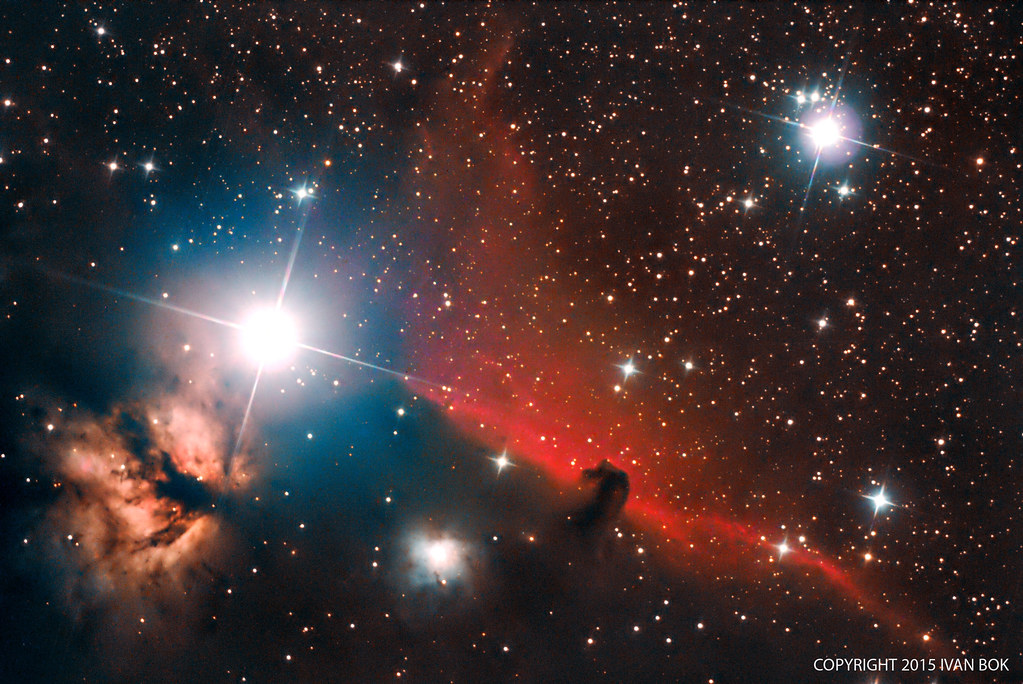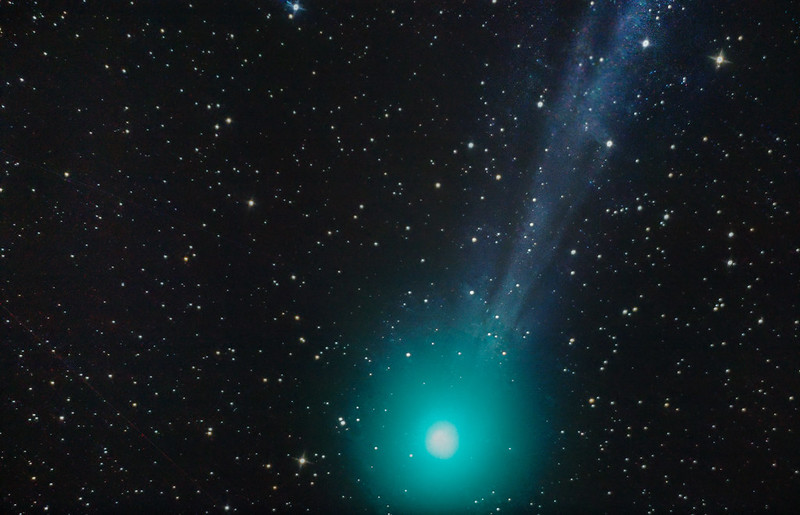Astrophotography from light-polluted cities can be a very difficult thing to do. As if our volatile tropical weather weren't enough, our skies are constantly bathed in a red glow. Thankfully, one doesn't have to travel very far (relatively speaking) to find darker skies. In the later half of 2014, I have made a few trips to neighbouring malaysia to attempt astrophotography there. The east side of the country offers several dark sites for such purposes. Organised trips are available on nearly a monthly basis for those interested to see the glory of the milky way.
To show what is possible with amateur astrophotography, here are some celestial jewels that I have managed to capture in the past few months from Mersing, Johor.
1. The Great Nebula in Orion
An amateur's favourite, because of its brightness, position and aesthetic beauty. This gas cloud glows in vibrant hues of reds, blues and greens, and is easily visible in Singapore as the sword of Orion. Here, large clumps of gas coalesce to form stars, one of the many regions in the galaxy where stars are born. This image was photographed with an 8" Newtonian and Modded Canon EOS 400D with a cumulative exposure of roughly 50 minutes.

2. Comet C/2014 Q2 (Lovejoy)
Making its debut in December 2014 (at the time this image was taken), Comet Lovejoy is a very bright comet in which countries near equatorial latitudes (including Singapore) are in a prime position to view. The following image was a collaboration between myself and a friend, using both CCD luminance data and DSLR RGB data. At the point of writing, the Comet is approaching its maximum brightness. There will be a large scale public observation event this weekend as well (see the clubsnap front page for details). It is easily seen as a fuzzy spot in Singapore through small binoculars.

3. The Cat's Paw Nebula in Scorpius
Also a birthplace of stars due to its large hydrogen-rich clouds, the cat's paw nebula resembles the paws of a celestial kitty. If one observes the region between the claws carefully, it is possible to see reflection nebulosity, where starlight is reflected off the gas clouds (as opposed to emission nebulosity where the gas itself emits light), giving the gas around the stars a bluish glow. Certain regions in the periphery also appear darker than others; and this is not an issue with the imaging system. Rather, there are actually dark absorption nebulae which block out light from dimmer stars in the background. Photographed with an 8" Newt and Modded EOS 400D. Total exposure 50 minutes.

To show what is possible with amateur astrophotography, here are some celestial jewels that I have managed to capture in the past few months from Mersing, Johor.
1. The Great Nebula in Orion
An amateur's favourite, because of its brightness, position and aesthetic beauty. This gas cloud glows in vibrant hues of reds, blues and greens, and is easily visible in Singapore as the sword of Orion. Here, large clumps of gas coalesce to form stars, one of the many regions in the galaxy where stars are born. This image was photographed with an 8" Newtonian and Modded Canon EOS 400D with a cumulative exposure of roughly 50 minutes.

2. Comet C/2014 Q2 (Lovejoy)
Making its debut in December 2014 (at the time this image was taken), Comet Lovejoy is a very bright comet in which countries near equatorial latitudes (including Singapore) are in a prime position to view. The following image was a collaboration between myself and a friend, using both CCD luminance data and DSLR RGB data. At the point of writing, the Comet is approaching its maximum brightness. There will be a large scale public observation event this weekend as well (see the clubsnap front page for details). It is easily seen as a fuzzy spot in Singapore through small binoculars.

3. The Cat's Paw Nebula in Scorpius
Also a birthplace of stars due to its large hydrogen-rich clouds, the cat's paw nebula resembles the paws of a celestial kitty. If one observes the region between the claws carefully, it is possible to see reflection nebulosity, where starlight is reflected off the gas clouds (as opposed to emission nebulosity where the gas itself emits light), giving the gas around the stars a bluish glow. Certain regions in the periphery also appear darker than others; and this is not an issue with the imaging system. Rather, there are actually dark absorption nebulae which block out light from dimmer stars in the background. Photographed with an 8" Newt and Modded EOS 400D. Total exposure 50 minutes.

Last edited:









